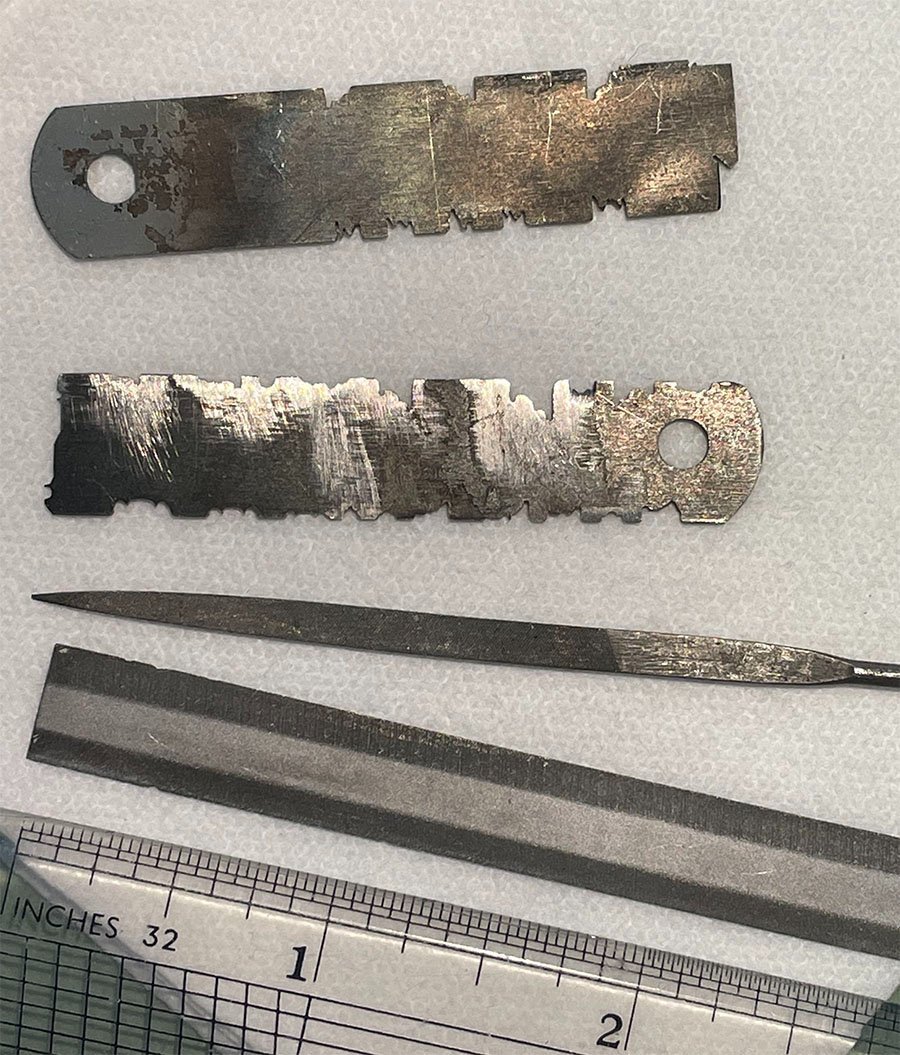-
Posts
13,347 -
Joined
-
Last visited
Content Type
Profiles
Forums
Gallery
Events
Everything posted by druxey
-

Gun Port Hatches
druxey replied to acaron41120's topic in Building, Framing, Planking and plating a ships hull and deck
Mark: I stand corrected by your researched response. However, from a model making point of view, it's easier to add the stop than cut planking back neatly! -

Donald Mckay(Or his client)had a sense of humor!
druxey replied to Lucius Molchany's topic in Nautical/Naval History
I'm surprised she didn't sail on April the first or December 25! -

Gun Port Hatches
druxey replied to acaron41120's topic in Building, Framing, Planking and plating a ships hull and deck
Port lids (not hatches) are flush to the outside planking when closed. There is a rebate in the sides of the port for the lids to shut against. The rebate is formed by a thin lining of wood over the frames and port sills. -

What are ground toes?
druxey replied to allanyed's topic in Building, Framing, Planking and plating a ships hull and deck
I agree with Bob; an archaic non-standard spelling of 'tow'. And decaid is 'decayed' or worn out. -
For crisp masking, flexible Tamiya tape is the best option that I've tried. Other tapes tend to leave a ragged line.
- 49 replies
-
- muscongus bay lobster smack
- Model Shipways
- (and 2 more)
-
I've found heating the hacksaw steel to bright cherry red and air cool will soften it nicely. For the quantity of molding that I need to run the blade does not really need to be re-hardened, so don't bother with that process.
- 1,129 replies
-
Welcome to the party, Stephane; bienvenue ici!
-
Aaaand... you leaped on that challenge really promptly! Glad to see the cutter once again making headway. Well done, Michael.
- 2,215 replies
-
That's a sledge hammer for a finishing nail! Try watchmakers' slotting files and escapement files by hand for the best results when forming scratch molding tools.
- 1,129 replies
-
Lovely sense of movement in those horses, Marc. Sorry to read of your father's decline, though.
- 2,699 replies
-
- heller
- soleil royal
-
(and 9 more)
Tagged with:
-
Coming along very nicely. The bailer is a great addition!
- 62 replies
-
- First Build
- Grand Banks Dory
-
(and 2 more)
Tagged with:
-
Syren Ship Model Company immediately springs to mind. https://syrenshipmodelcompany.com/
-
A suggested upgrade for the rope you need would be from the Syren Ship Model Company. Line about .035" or .045" in tan would be about right. See: https://syrenshipmodelcompany.com/miniature-rope.php
- 62 replies
-
- First Build
- Grand Banks Dory
-
(and 2 more)
Tagged with:
-
Ev ery model is a learning experience! Looks like you are doing well.
- 62 replies
-
- First Build
- Grand Banks Dory
-
(and 2 more)
Tagged with:
About us
Modelshipworld - Advancing Ship Modeling through Research
SSL Secured
Your security is important for us so this Website is SSL-Secured
NRG Mailing Address
Nautical Research Guild
237 South Lincoln Street
Westmont IL, 60559-1917
Model Ship World ® and the MSW logo are Registered Trademarks, and belong to the Nautical Research Guild (United States Patent and Trademark Office: No. 6,929,264 & No. 6,929,274, registered Dec. 20, 2022)
Helpful Links
About the NRG
If you enjoy building ship models that are historically accurate as well as beautiful, then The Nautical Research Guild (NRG) is just right for you.
The Guild is a non-profit educational organization whose mission is to “Advance Ship Modeling Through Research”. We provide support to our members in their efforts to raise the quality of their model ships.
The Nautical Research Guild has published our world-renowned quarterly magazine, The Nautical Research Journal, since 1955. The pages of the Journal are full of articles by accomplished ship modelers who show you how they create those exquisite details on their models, and by maritime historians who show you the correct details to build. The Journal is available in both print and digital editions. Go to the NRG web site (www.thenrg.org) to download a complimentary digital copy of the Journal. The NRG also publishes plan sets, books and compilations of back issues of the Journal and the former Ships in Scale and Model Ship Builder magazines.





